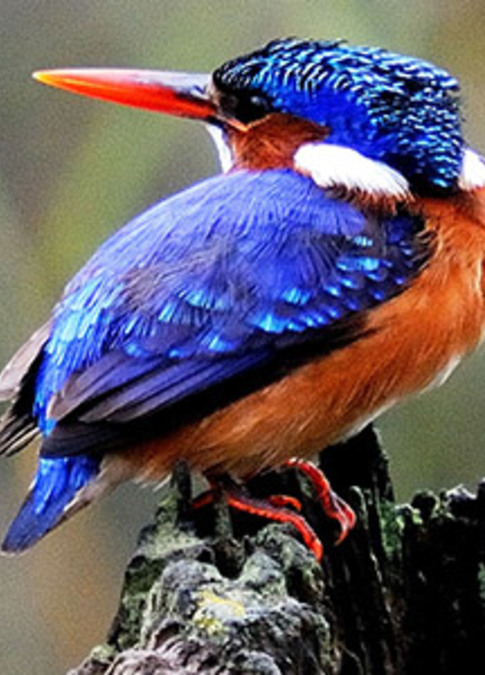Zebra
It was Jane Goodall who first noted the different sleep patterns of zebra. She stated that when zebra sleep during the day, they remain semi-conscious and at the merest hint of danger or of anything out of the ordinary, they are immediately alert and ready for flight. At night, however, sentries are posted and the rest of the herd sleeps soundly. Apparently it is possible, if one avoids being noticed by the sentries - an almost impossible undertaking! - to get so close as to be able to touch one of the sleeping animals.
On a hot, drowsy afternoon some years ago we were beside the Zambezi watching a mixed group of zebra and wildebeest grazing on the banks of the river or snoozing under the trees. Some distance down the road a man carrying a sack emerged from the bush. For a few moments he went unnoticed, but then one of the wildebeest snorted. In an instant the peaceful scene changed. With drumming hooves and in a whirl of dust the wildebeest and zebra disappeared into the bush. As the dust cleared we noticed that there was one exception. One zebra stood its ground before, heading in a direction opposite to its fellows, it ran in the direction of the man. The man dropped his sack and put up his hands in a vain effort to ward off the charging animal. Reaching the man the zebra swung around and delivered two lightening kicks that downed him. As the man struggled to stand, the zebra again kicked him. For a moment we were thunderstruck. The man lay motionless in the dust. We started the car and drove towards the scene, and the zebra ran off.
We were not far from the entrance to the park and so loaded the bloody and unconscious man into the car and drove to the gate. By the time we reached it the man was showing some signs of life, and rather to our surprise, when we tried to get him out, he made some feeble attempts to stay in the car. A ranger came to see what was happening. Looking in and seeing the man, he immediately pulled back and, shouting to a colleague, ran into the office. At this the bloodied man made an effort to get out of the car through the opposite door. The ranger reappeared with a pair of handcuffs and to our astonishment manhandled the victim, dragging him from the car and cuffing his wrists together.
All was eventually explained. The bloodied man was a notorious poacher. It was only after the rangers were sure that the culprit was well and truly under their control that they were willing to call an ambulance from the hospital in Livingstone.
Why did the zebra act in the way that it did? It would be nice to think that it was, on behalf of all the other animals in the park, getting its own back on the poacher, but sadly that would be to credit the zebra with above average perception and intelligence. I believe that what actually happened was that the zebra was, unlike its fellows and despite what Jane Goodall had to say about zebra at that time of day, fast asleep. When the rest of the herd careered off into the bush, this one animal was left alone and completely disorientated. It first headed towards the man because he was the only visible living thing. When the man dropped his bag and threw up his arms the zebra, believing that it was about to be attacked, in desperation kicked out.
All this came to mind when at Kariega we stopped beside a zebra and her foal. Both were remarkably tame and the foal came forward inquisitively to investigate us. We were tempted to reach out to feel its soft, gentle, whiffling nose. But we didn't, for despite its appeal we remembered that it, like all the others, was a wild animal and not a family pet.








